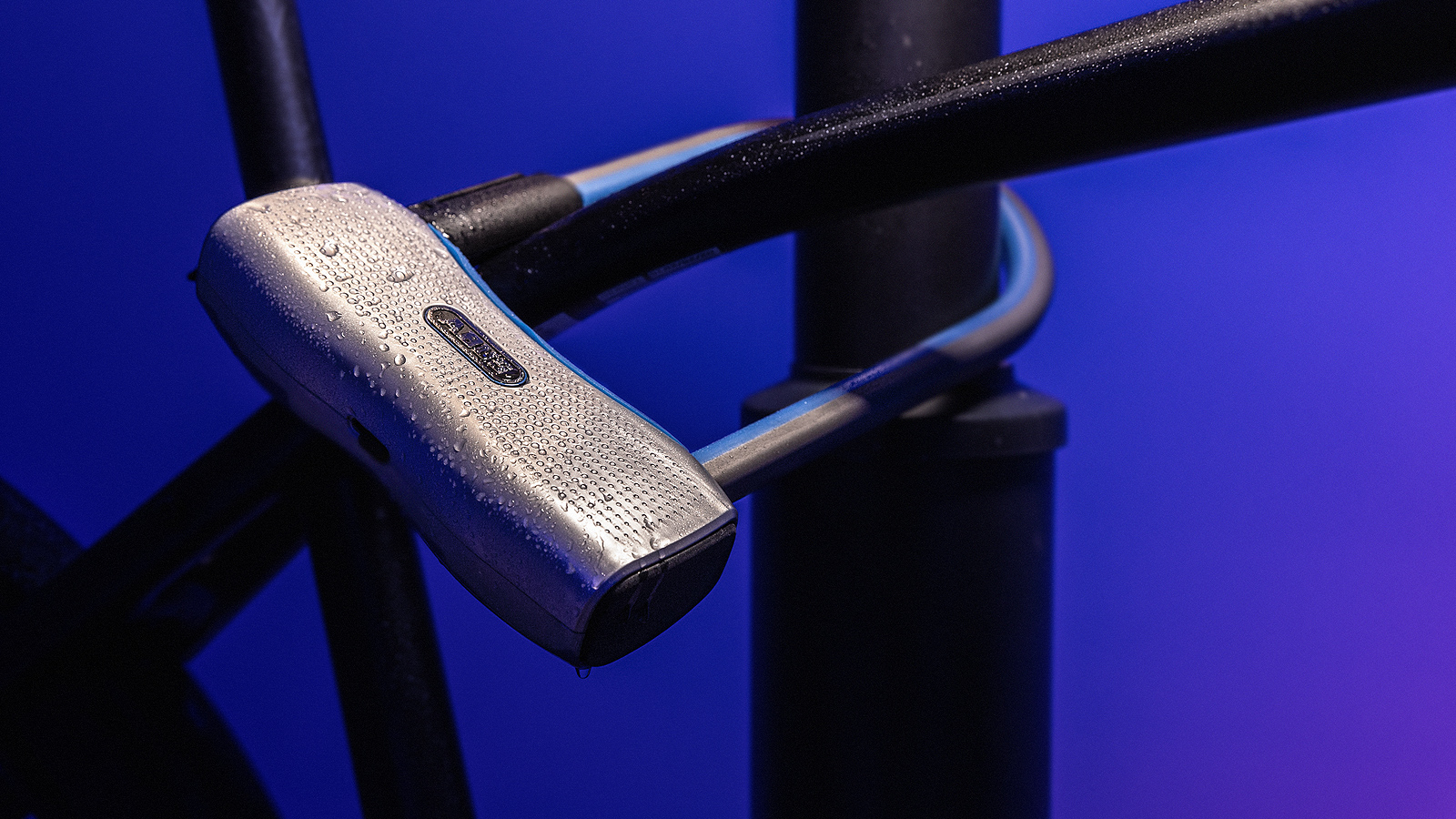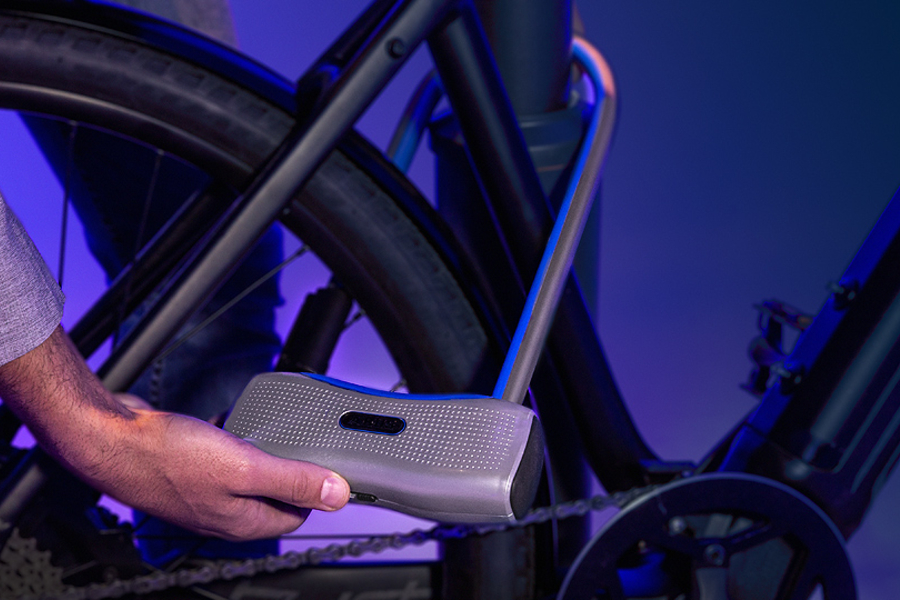Known for its high-tech security products for homes, business properties, and vehicles, Germany’s Abus introduced a premium U-lock for bicycles and e-bikes. The Abus 770A SmartX U-Lock adds smartphone integration to one of the most robust locks available.
The 770A SmartX starts with a 13mm hardened steel shackle, available in 9-inch or 11-inch lengths. The lock’s housing and the locking mechanism’s load-bearing parts are all constructed of hardened steel. So, yeah, it’s strong.
An integrated 3D position sensor can detect even slight movements or vibration. If the sensor detects only minor vibration or movement, an internal alarm sounds a low warning beep. In the case of serious movement, however, the Abus alarm kicks in with a 100+ decibel sound that lasts a full 15 head-splitting seconds. The alarm reactivates automatically ready to sound off again if anyone is foolish enough to continue trying to saw, drill, cut, or otherwise defeat the lock to steal your expensive ride.
Download the iOS or Android Abus app and use a unique keycard that comes with the Abus 770A SmartX to associate the lock with your smartphone. If someone sets of the lock’s alarm, either the warning beep or the blaring 15-second siren, you’ll receive an alert on your smartphone.
Your smartphone and the Abus lock use Bluetooth as a proximity detection system for locking and unlocking the Abus. When you arrive at a destination and want to use the lock, push the shackle in the lock, activate the alarm, and walk away to lock the Abus. When you return, the lock detects your phone, and you can just pull the shackle out of the lock. With this convenient system, you don’t need to remember a combination or keep a key in your pocket — just don’t lose your phone.
You can grant temporary or permanent access to other people from your smartphone. The phone GPS retains the lock’s last parking and locking location, but it doesn’t track subsequent movement. If you or someone else from your approved user list forget to lock your bike, for example, the Abus does not act like a LoJack tracker.
Savvy cyclists typically use both a U-lock and a chain or folding lock to secure their expensive rides. With multiple locks, you can secure the bike’s frame to a fixed element such as a large bike rack or parking meter using a U-lock and then protect your wheels with a chain or folding lock.
The Abus 770A SmartX, which is available from Abus dealers and select online retailers, is available in two sizes, without or without a handy frame-mounted bracket. An Abus 770A SmartX with a 9-inch shackle lists for $230 alone, or $250 with the mounting bracket. An 11-inch model retails or $250 without or $280 with a mounting bracket.
Editors' Recommendations
- Yale wants to keep your possessions safe with new smart delivery box, lock
- The 6-in-1 Ultraloq U-Bolt Pro deadbolt lock opens with a shake of your phone









